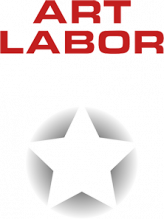Exhibitions
Yin Liang: White Noise
ART LABOR Gallery is delighted to present White Noise, the first solo exhibition by artist Yin Liang. The exhibition is curated by Dr. Yang Mengjiao, and will feature a series of his latest paintings.
Exhibition Preface
By Yang Mengjiao
The rain never enters the room.
Outside the window, it gathers into a continuous veil—a surface of even, fluid sound that gently smooths the edges of the world. This “veil” is not a backdrop for a story, but a space of perception. We find ourselves indoors—alone, composed—watching the surge of the storm from afar, yet hearing more distinctly the echo of our own heartbeat. The wilder the wind and rain, the slower the room seems to move. This is not opposition, but counterpoint.
Rain dulls the sharpness of the city. The boundaries between color and light dissolve into a single plane. The distance between dawn and dusk contracts to the thickness of “this moment,” like a track covered in white noise—steady, continuous, self-contained. Yin Liang is drawn to this experience of suspension: time cannot be halted, but its passing can be quieted. A day can unfold spaciously, almost without incident.
White Noise does not seek to intensify emotion, but to transform it into a subtle, almost physiological undertone. What the viewer encounters are images of trees and weather, yet they are not scenes of “trees struggling in a storm.” On the contrary, Yin Liang refuses to cast natural elements as actors in a theater of conflict. He begins from stillness—from the calm of the interior—observing and turning inward, letting wind and rain trace the isobars of emotion.
To this end, Yin Liang deliberately “de-noises” his brushwork. Through airbrushing and glazing, he creates a uniform field without texture or gesture. The spray gun, in his hands, is not a tool of precision but one of diffusion—producing soft, ambiguous surfaces without the assertiveness of touch. The image is thus freed from painterly drama and allowed to present itself as a weather to be seen. Later, he introduces another layer of chance: the incompatibility of oil and water, the unpredictable whitening of paint after brushing. These become “accidental rain marks,” evoking the feeling of rain sweeping across glass, where control and risk coexist within a single motion. Here, “realness” is not a matter of technique, but of yielding—to the unknown within each act of making.
This painterly language grants White Noise a distinct position within contemporary abstraction. Traditional glazing, with its successive translucent layers, delays the emergence of an image. In Yin Liang’s work, this veil is not only optical but also acoustic—it spreads perception evenly, bringing the image into a state of calm equilibrium. Within this stillness, attention drifts from meaning toward sensation: there is no narrative arc to follow, only the subtle tremors of humidity, temperature, and wind—like listening to static on a radio, hearing noise as the quiet texture of sound itself.
If “white noise” in acoustics refers to an evenly distributed energy, here it becomes an ethics of seeing: to tune the world’s clamor down to a bearable threshold, allowing us, in moments of apparent stillness, to recalibrate our relation to reality. The room beyond the storm is not an escape, but a return. In that return, emotion settles into color and atmosphere—and for a brief while, painting holds time still.

